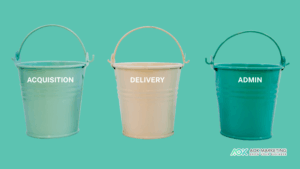As the global business climate accelerates, companies are continually seeking innovative ways to maintain relevance and competitiveness. In this ceaseless chase for optimal progress, the subscription model has burst onto the scene, completely transforming how businesses communicate the value proposition of their offerings.
Not only does this novel approach assure firms of a steady flow of income, but it also cultivates enduring bonds with their cherished clientele.
To shed light on this groundbreaking methodology, this discussion will focus on the subscription model’s internal workings and delve into 10 distinctive variations. The aim is to enhance readers’ comprehension of this potent marketing technique that’s taken the business world by storm.
In the hustle and bustle of today’s customer-driven commercial landscape, organizations are discovering the potential of subscription models. The paradigm shift from traditional selling to the subscription-based approach is inspiring a new era of doing business. By offering a consistent and predictable revenue source, this model influences how businesses present their products and services and assist in fostering lasting customer relationships.
The subscription model is an influential strategy in our fast-paced business world because of its customer prioritization. Organizations can attract and retain customers more effectively by offering a seamless interaction with products or services.
This winning combination of consistency in revenue and a strengthened customer relationship echoes the modern need for a more robust customer experience.

Importance and Advantages of the Subscription Model
Subscription models have emerged as a powerful tool in the modern business landscape. These models present an array of advantages, not just for businesses but also for customers. Navigate through this comprehensive guide to understand these benefits and see why subscription-based models could bear the secret to business growth and customer satisfaction.
Businesses greatly benefit from adapting to a subscription model, particularly in the digital world.
One of the most striking advantages is the guarantee of a steady and predictable source of income. Knowing exactly what earnings to expect each month provides businesses the platform to plan, strategize, and invest in the future, fostering opportunities for exponential growth and stability.
Visibility into future revenues derived from subscriptions can empower businesses to make sound financial decisions. Businesses can match their growth initiatives with predicted revenue streams, making the planning phase less fraught with uncertainty. Thus, a subscription model instills confidence in businesses to take calculated risks toward expansion and innovation.
Besides providing a stable financial framework for businesses, subscription models are redefining customers’ buying experiences, bringing a wealth of convenience and value. The time and effort spent on repeated purchases can be draining. With subscriptions, customers pay a predetermined fee to gain uninterrupted access to a product or service – it’s as easy as “set and forget.”
Key Variables in Implementing Subscription Models
When implementing a subscription model, businesses must consider several key variables:
Price: The subscription fee should reflect the product or service’s value. It should be affordable for the customer while still profitable for the business.
Frequency: Businesses must decide how often customers will be charged. This could be monthly, quarterly, or annually.
Product Offering: What will customers receive as part of their subscription? This could be physical products, digital content, services, or a combination of planning for the future and investing in growth easier.
Understanding the Subscription Model in Marketing
A marketing strategy is only as effective as the business model that underpins it. Ever growing in popularity is the subscription model, noteworthy for its outstanding success among businesses.
This customer-centric model is rooted in the principle of recurring payments in order for the consumer to gain frequent and continuous access to a service or product. Predominantly applied on a monthly or yearly basis, this ingenious approach allows businesses to depend on a consistent stream of income.
The subscription business model stands as a beacon of customer convenience and business stability in the world of commerce. Enriched by diversity, subscription services encapsulate a wide variety of offerings, including tangible goods like subscription boxes to intangible assets like digital content and software.
Such regular trades involve constant, repeat payments made by the customer to maintain continuous access to a product or service. The advantage, a predictable source of income allows businesses to accurately anticipate their monthly or quarterly revenue, offering a significant edge in the game of forecasting.
How it Works
In a subscription business model, businesses sell their products or services regularly. Subscription services can include many offerings, from physical goods such as subscription boxes to digital content and software. The customer makes consistent, repeated payments in exchange for continuous access to the product or service. This model allows businesses to have a reliable source of recurring revenue, making it easier to forecast monthly or quarterly revenue.
The Role of the Subscription Model in Today’s Market
In today’s market, the subscription model has become increasingly famous due to its flexibility and convenience for both businesses and customers.
Customers enjoy the ease of automatic renewals and the pleasure of regularly receiving new products or services. On the other hand, businesses benefit from steady revenue and the ability to build long-term relationships with their customers.
The subscription model is particularly prevalent in the digital realm, where it’s used by streaming services, news websites, and software providers. However, it’s also found in traditional industries, such as fitness (think gym memberships) and retail (think monthly beauty box subscriptions).
It’s worth noting that while the subscription model can offer significant benefits, it’s not suitable for every kind of business. It works best for companies that offer products or services consumed regularly, delivering value over a prolonged period.
The Evolution of the Subscription Model
The subscription model has evolved significantly over the years. In the past, subscriptions were primarily used for physical products such as magazines and newspapers. It’s become a mainstream business strategy that can be applied to many different industries and contexts.
As technology advances, businesses have been able to develop more sophisticated subscription models, offering customers personalized experiences and tailored services. On top of that, subscription businesses now have access to powerful analytics tools, enabling them to acquire deeper insights into customer behavior and preferences.
This evolution has enabled a more profitable and sustainable business model for companies seeking reliable sources of revenue in an ever-changing market. The subscription model is the perfect example of how technology can enable businesses to offer better services and create stronger customer relationships.
Challenges of the Subscription Model
While the subscription model is a powerful tool, it presents certain business challenges.
The main challenge is customer churn, or when customers cancel their subscriptions before they’ve received full value from them. This can be caused by a variety of factors, such as poor product quality, unpredictable pricing, or limited customer support.
Businesses must deliver consistent value and excellent customer service to prevent customer churn. This means establishing clear expectations from the start, providing customers with a memorable experience, and responding promptly to any issues or concerns. It’s also important to regularly review pricing models and product offerings to ensure customers receive the best possible value.
The subscription model is an increasingly popular business strategy, offering businesses dependable revenue streams and customers convenient access to products or services. To maximize success in this model, companies must be aware of the key variables involved and understand the evolving nature of the market.
With a commitment to delivering excellent customer service and consistent value, businesses can make the most of the subscription model and benefit from its potential.
Current Trends in the Subscription Model
Today, the subscription model is more popular than ever. As technology advances and customer expectations rise, businesses are looking for ways to provide better service and capitalize on new opportunities.
As a result, there has been an increase in more innovative subscription models such as micro subscriptions, pay-per-use subscriptions, subscription boxes, and white glove services. These models allow businesses to offer value-added features to customers in exchange for a higher price point, increasing the average revenue per user (ARPU).
Furthermore, subscription businesses leverage technology like artificial intelligence and machine learning to understand their customers’ needs better and deliver tailored experiences.
10 Types of Subscription Models in Marketing
Businesses can use many different types of subscription models to increase customer engagement and loyalty. Here are 10 popular subscription models that businesses use in their marketing strategies:
1. Monthly Subscriptions – This model allows customers to pay on a monthly basis for access to products or services.
2. Yearly Subscriptions – This model is similar to the monthly subscription but with an annual payment.
3. Free Trial Subscriptions – This model lets customers try a product or service for free before committing to a longer-term plan.
4. Tiered Subscriptions – This model offers customers different levels of access based on price, such as basic, premium, and platinum plans.
5. Pay-As-You-Go Subscriptions – This model allows customers to pay for a product or service on an as-needed basis without signing up for a long-term subscription.
6. Perpetual Subscriptions – This model charges a one-time fee for access to products or services until the user decides to cancel their subscription.
7. Membership Subscriptions – This model provides access to content, products, or services for a fee, with the added benefit of exclusive discounts or offers.
8. Loyalty Subscriptions – This model rewards customers with loyalty points that can be redeemed for discounts on future purchases.
9. Bundle Subscriptions – This model offers multiple related products or services as part of a single package at a discounted price.
10. Affiliate Subscriptions – This model rewards customers for referring other customers to the business, typically through commission-based payments.
By offering the right combination of subscription models, businesses can create appealing offers that cater to different customer needs and preferences. Businesses should carefully consider each option and determine which subscription model best suits their target audience.
Moreover, businesses should use analytics to track customer behavior and preferences over time, as this will give them a better understanding of how customers use different subscription models and how they can optimize them for maximum success. Understanding customer habits is key to creating an effective subscription strategy that keeps customers engaged and loyal in the long term.
With the right combination of subscription models and an understanding of customer behavior, businesses can capitalize on the potential of the subscription model and create a sustainable source of revenue for long-term success.
Benefits of Subscription Models for Businesses
The subscription model offers numerous benefits to businesses looking to maximize their profits and foster better relationships with customers.
For starters, it provides businesses with a reliable source of recurring revenue that can help increase profits and offset unexpected costs. It also allows businesses to get an up-front payment from customers, which can provide financial stability even during challenging times.
Moreover, the subscription model enables businesses to build closer relationships with customers by offering ongoing support and value. This helps to foster a sense of loyalty among customers, boosting customer retention and driving repeat business.
Finally, the subscription model enables businesses to better predict demand and plan for future growth. With a steady stream of revenue coming in, businesses can more accurately forecast market trends and invest in marketing strategies that will yield the highest return on investment.
Overall, the subscription model is an attractive option for businesses looking to maximize their profits and create lasting customer relationships. By understanding the key variables involved and leveraging technology, businesses can make the most of this dynamic business model and benefit from its potential.
Choosing the Right Subscription Model for Your Business
When choosing the right subscription model for your business, several factors must be consideredSubscriptions. The most important thing is to understand your target audience and their needs so you can create an offer that meets those needs.
You should also take into account the cost of providing the service or product, as well as any discounts or incentives you will offer customers. Additionally, you should consider the technology you will use to manage and implement your subscription model.
Finally, it is important to understand how customers will pay for their subscriptions. This could include credit cards, PayPal, or other digital payment methods. Knowing this information in advance will ensure that your subscription model is successful and profitable.
By considering these factors, businesses can ensure that they select the right subscription model for their target audience and create an offer that provides customers with value. This will help businesses increase customer engagement and loyalty, creating a successful long-term business model.
How can different models benefit different types of businesses?
Subscription models can benefit businesses of all sizes and types.
For example, a small business may want to offer a pay-as-you-go subscription model to make it easier for customers to access their services or products without committing to a longer plan.
On the other hand, an ecommerce store may opt for a monthly subscription model that provides customers with discounts and exclusive offers. This model can help keep customers engaged and increase sales over time.
A media company may choose to offer both a tiered subscription plan and an affiliate program, allowing them to generate additional revenue from user referrals.
Ultimately, the key is to understand your business model and identify which subscription model will best serve the needs of your customers. By selecting the right model, businesses can create an attractive offer that meets customer expectations and drives profits in the long term.
Case Studies of Successful Subscriptions Models Considering These Factors
Understanding the factors involved in choosing a subscription model is one thing, but seeing how different businesses have implemented successful models is another. Below are a few case studies that illustrate how businesses of all sizes and types have utilized various subscription models to great success.
One example is the Dollar Shave Club, which has become one of the most successful businesses in recent years. Through their monthly subscription model, they are able to give customers access to great products at an affordable price while offering discounts and exclusive offers.
Another example is Netflix, which has become one of the leading streaming services in the world. Their tiered subscription plan allows users to choose a plan that best suits their needs and budget.
Finally, Amazon Prime is another example of a successful subscription model. By offering customers exclusive offers, discounts, and free shipping, Amazon has been able to attract millions of members and generate significant revenue over the years.
These case studies show that businesses of all sizes and types can successfully leverage subscription models to increase profits and create lasting relationships with customers. By understanding customer needs and leveraging technology, businesses can capitalize on the potential of the subscription model and create a sustainable source of revenue for long-term success.
Conclusion
The subscription model is an attractive option for modern businesses looking to maximize profits and foster better customer relationships. By understanding customer needs and leveraging technology, businesses can make the most of this dynamic model and benefit from its potential.
A variety of subscription models are available, so it is important to understand the key factors involved in choosing the right one for your business. Additionally, businesses can learn from case studies demonstrating successful subscription model implementations.
Overall, the subscription model can be an effective way for businesses to increase profits and create lasting customer relationships. By understanding the dynamics of this model and taking advantage of its potential, businesses can benefit in the long term.
About The Author
Jana Legaspi
Jana Legaspi is a seasoned content creator, blogger, and PR specialist with over 5 years of experience in the multimedia field. With a sharp eye for detail and a passion for storytelling, Jana has successfully crafted engaging content across various platforms, from social media to websites and beyond. Her diverse skill set allows her to seamlessly navigate the ever-changing digital landscape, consistently delivering quality content that resonates with audiences.





